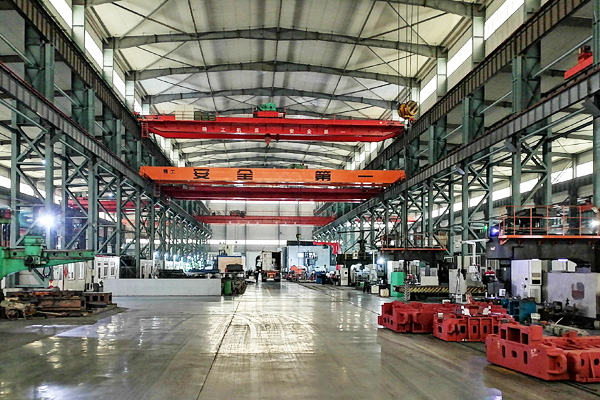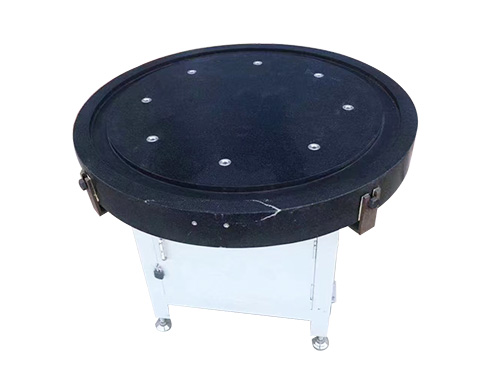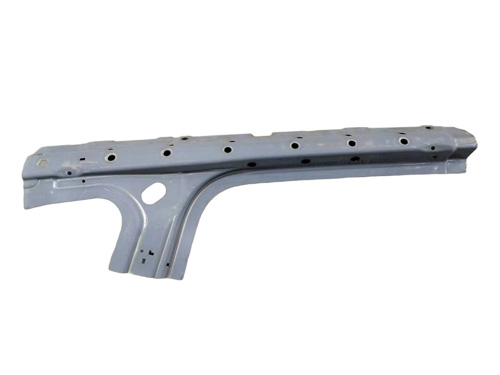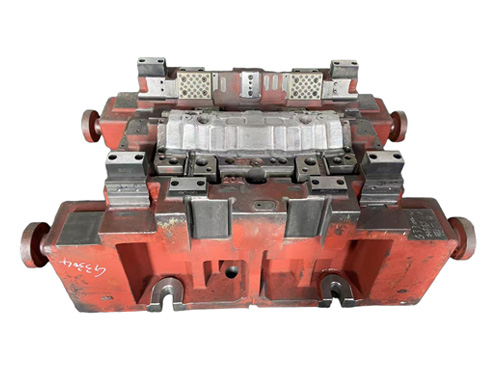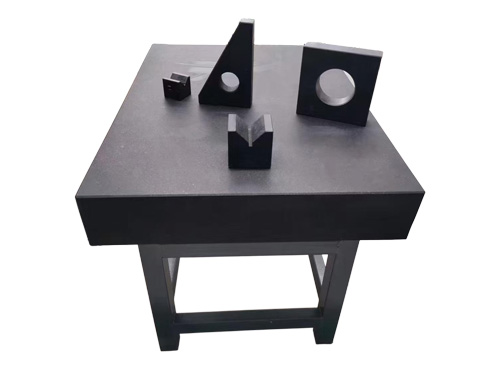News Detail
A Guide to Avoiding Pitfalls in Cast Iron Platform Purchasing: A Comprehensive Analysis from Accuracy Grades to Load-Bearing Capacities
author:hxrtools Time:2025-06-01 08:30:23 Click:84
In fields such as mechanical processing and precision measurement, cast iron platforms have become indispensable basic equipment due to their stable performance and reliable load-bearing capabilities. However, the quality of cast iron platform products on the market varies widely. Improper selection of key parameters such as accuracy grades and load-bearing capacities not only affects the usage effect but may also lead to a waste of resources.
I. Introduction: The Industry Value of Cast Iron Platforms
1.1 Demand Trends for Basic Platforms in the Manufacturing Industry
As the manufacturing industry moves towards higher precision and efficiency, the requirements for the accuracy and stability of basic platforms in mechanical processing, mold manufacturing, instrument calibration, and other areas are increasing. Cast iron platforms, as important tools for ensuring production quality, have seen a持续增长 (sustained growth) in market demand.
1.2 Core Advantages of Cast Iron Platforms
Cast iron material exhibits good casting properties, shock absorption, and wear resistance. This enables cast iron platforms to maintain stability under complex working conditions, effectively absorbing vibrations during processing and providing a reliable reference for workpiece processing, achieving a good balance between cost and performance.
1.3 Core Focus of This Article: Analysis of Key Parameters for Pitfall Avoidance in Purchasing
This article focuses on the core parameters of cast iron platforms, such as accuracy grades and load-bearing capacities, delves into common pitfalls in the purchasing process, and provides scientific judgment methods to help users select suitable cast iron platforms.
II. Basic Understanding of Cast Iron Platforms
2.1 Device Definition and Functional Overview
A cast iron platform is a planar reference tool made from cast iron through casting, processing, and other processes. It is mainly used for the measurement, scribing, assembly, and inspection of workpieces, providing a stable working plane and reference for mechanical processing.
2.2 Core Component Characteristics
Cast Iron Material Properties: The graphite structure within cast iron gives the platform good shock-absorbing performance, effectively buffering processing vibrations. Its high hardness and wear resistance ensure that the platform is not easily worn during long-term use, maintaining its accuracy.
Platform Structure Design: Reasonable rib layout and box-type structure design enhance the platform's rigidity and load-bearing capacity, ensuring that it does not deform easily under heavy loads.
2.3 Mainstream Product Classifications
By Accuracy Grade: Common grades include Grade 0, Grade 1, and Grade 2. Grade 0 has the highest accuracy and is suitable for ultra-precision measurement. Grade 1 has slightly lower accuracy but meets the needs of precision instrument manufacturing. Grade 2 is suitable for general mechanical processing and assembly.
By Purpose: Includes measurement platforms, scribing platforms, assembly platforms, etc. Different types of platforms have varying accuracy requirements and functional designs.
2.4 Analysis of Key Technical Parameters
Flatness: Reflects the flatness of the platform's working surface and is an important indicator of platform accuracy. The higher the flatness, the smaller the measurement and processing errors.
Load-Bearing Capacity: Refers to the maximum weight the platform can withstand, which is related to the platform's material, structure, and size. It should match the actual load during use.
Hardness: An appropriate hardness ensures that the platform can resist friction and impacts from workpieces while facilitating later accuracy restoration, affecting the platform's service life.
III. Key Points for Selecting Accuracy Grades and Load-Bearing Capacities
3.1 Core Elements for Selecting Accuracy Grades
Matching Processing Requirements: Choose a platform with the corresponding accuracy grade based on actual processing accuracy requirements. For example, for precision part measurement, a Grade 0 or Grade 1 platform is required; for ordinary mechanical assembly operations, a Grade 2 platform can meet the needs.
Avoiding Overly High or Insufficient Accuracy: An excessively high accuracy grade will increase procurement costs, while insufficient accuracy cannot guarantee processing quality. A reasonable selection should be made based on actual needs.
3.2 Key Factors for Matching Load-Bearing Capacities
Estimating Actual Load: Consider the weight of the workpiece, the weight of the jigs and fixtures during processing, and any possible impact forces to ensure that the platform's load-bearing capacity has a certain margin.
Correlation Between Structure and Material: Load-bearing capacity is closely related to the platform's structural design and cast iron material. When selecting, it is necessary to understand the platform's structural characteristics and material performance to avoid platform deformation and damage due to insufficient load-bearing capacity.
3.3 Comprehensive Consideration of Other Parameters
Matching Size Specifications: The platform size should be selected based on the workpiece size and operating space requirements to ensure that the workpiece can be fully placed and is easy to operate on, while also reserving space for future expansion.
Surface Roughness Requirements: Surface roughness affects the contact effect between the platform and the workpiece. Different processing scenarios have different requirements for surface roughness, which should be selected according to actual needs.
3.4 Avoiding Common Purchasing Pitfalls
Ignoring Differences in Usage Scenarios: Different industries and processing techniques have different requirements for platform accuracy and load-bearing capacity. They cannot be generalized, and a selection should be made based on specific usage scenarios.
One-Sided Pursuit of Low Prices: Low-priced products may have defects in material and processing technology, leading to non-compliance with accuracy standards or insufficient load-bearing capacity. A comprehensive assessment of cost-effectiveness is required when purchasing.
IV. Purchasing and Usage Recommendations
4.1 Supplier Selection and Quality Judgment
Evaluating Production Qualifications and Technical Strength: Give priority to suppliers with relevant production qualifications and quality management system certification. Understand their production equipment and technological level to ensure stable product quality.
Distinguishing Product Quality: Observe whether the platform surface is flat and free of casting defects such as sand holes and blowholes. Check the accuracy inspection report to confirm that the accuracy grade meets the standard. Judge the material density by tapping the platform and listening to the sound.
4.2 Precautions for Acceptance and Installation
Key Items for Delivery Acceptance: Verify whether the platform's size, accuracy grade, load-bearing capacity, and other parameters are consistent with the contract. Use a level to detect the platform's flatness. Check the platform surface and structure for damage.
Installation Environment and Steps: Install the platform in a dry, flat, and vibration-free environment. Adjust the leveling pads to make the platform horizontal and ensure that each support point is evenly stressed.
4.3 Daily Maintenance and Care Tips
Maintenance Methods for Extending Service Life: Regularly clean iron filings and oil stains from the platform surface to prevent impurities from affecting accuracy. Avoid tapping operations on the platform to prevent damage to the working surface. Regularly apply anti-rust oil to prevent the platform from rusting.
Preventive Measures for Common Problems: Avoid overloading the platform to prevent deformation due to uneven stress. Regularly check the platform's structural stability and address any issues promptly.
V. Industry Trends and Future Prospects
5.1 Directions for Technological Innovation
Application of High-Precision Processing Technologies: In the future, cast iron platforms will adopt more advanced processing technologies, such as CNC grinding and precision scraping, to further improve platform accuracy and surface quality.
Trend towards Intelligent Design: Incorporate sensor technology to achieve real-time monitoring of platform status, such as load warnings and deformation detection, enhancing usage safety and convenience.
5.2 Changes in Market Demand
Growing Demand for Personalized Customization: Different users have varying requirements for platform size, accuracy, and function. Personalized customization will become an important direction to meet diverse market demands.
Special Requirements of Emerging Industries: With the development of emerging industries such as new energy and semiconductors, higher requirements for the accuracy and corrosion resistance of cast iron platforms have been put forward, driving product upgrades and iterations.
5.3 Green Environmental Protection and Sustainable Development
Environmental Protection Upgrades in Production Processes: Adopt green casting processes to reduce exhaust gas and wastewater emissions during production. Promote the use of environmentally friendly coatings and anti-rust agents to reduce environmental impact.
Resource Recycling and Reuse: Strengthen the research and development of cast iron waste recycling technology to improve resource utilization and achieve sustainable development in the industry.
VI. Conclusion: Scientific Purchasing to Avoid Pitfalls
The accuracy grade and load-bearing capacity of cast iron platforms are key factors in purchasing, and other parameters and usage requirements should also be comprehensively considered. By mastering the purchasing points and pitfall avoidance guidelines in this article, users can effectively avoid purchasing pitfalls and select suitable cast iron platforms. In actual use, proper maintenance and care should be carried out to fully leverage the platform's performance and provide reliable support for production.
 HOT PRODUCTS
HOT PRODUCTS
 CONTACT US
CONTACT US
—— E-mail:project@haoranmj.com
—— Whatsapp:+86 18932785670
—— Tel:+86 18932785670
—— Add:Across from Sanjing Distillery on Road 4, Botou Economic Development Zone, Cangzhou City, Hebei Province









